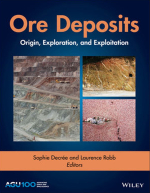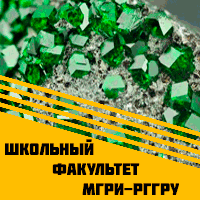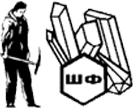Добрый день, Коллеги. Важное сообщение, просьба принять участие. Музей Ферсмана ищет помощь для реставрационных работ в помещении. Подробности по ссылке
Ore deposits. Origin, exploration, and exploitation / Рудные месторождения. Происхождение, разведка и эксплуатация
The volatility of financial markets over the past decade has had a major impact on the upstream sector of the lobal resource industry. Exploration and replenishment of natural resources have not kept pace with consumption, and the declining rate of discovery of new, viable mineral deposits is cause for concern. Coupled with this is the fact that world‐class mineral deposits are increasingly difficult to find because large, shallow ores have largely been discovered. A major challenge of the 21st century, therefore, is how to locate buried mineral deposits that do not have a footprint at the surface, and also how to identify new sources of mineral wealth.
Recent trends in exploration and mining have seen a number of amazing innovations, exemplified by technologies that have, for example, enabled the mining of massive sulphide deposits on the ocean floor. Even more astounding are the developments aimed at exploiting asteroids from near‐Earth orbits. While many might see these innovations as futuristic, they are nevertheless counterbalanced by the ability of geoscientists to continue pushing the frontiers of mineral exploration and seek new land‐bound metallotects, as well as to develop innovative methods for detecting metal anomalies under cover. This book brings together a variety of papers that, in Section I, highlight the features of less conventional mineral deposit styles that offer alternative exploration opportunities, and, in Section II, describe some of the recent technological advances that will assist in the future discovery of mineral deposits.
Whereas most of the world’s mineral exploration is still focused on well‐trodden metallotects, such as magmatic arcs and stable cratonic blocks, Section I emphasizes the features of atypical ores such as metamorphosed
porphyry deposits of Proterozoic age, stratiform copper deposits hosted in sandstone, and fractionation mechanisms in S‐type granitoids. These examples point to the fact that exploration should not be constrained by geologic didactics that exclude certain targets because of seemingly inappropriate lithology, tectonic setting, or epoch. Some of the great discoveries of the past have been made by thinking intuitively and “out of the box.” Section II presents a variety of techniques that expand the armory of exploration tools available to the geoscientist: from microscopic and laboratory techniques involving mineral cathodoluminescence and isotope vectoring, to big data approaches aimed at geophysically imaging the Earth’s crust. Although this book covers but a small fraction of the advances currently being made in mineral exploration science, it is timely because these innovations will catalyze the implementation of resource utilization policies that will, in the future, be more sustainable and environmentally responsive than at any time in the past.
Section I: Characteristics of Atypical Mineral Deposit Styles
1. Origin and Exploration of the Kola PGE‐bearing Province: New Constraints from Geochronology
2. Geochemical, Microtextural, and Mineralogical Studies of the Samba Deposit in the Zambian Copperbelt Basement: A Metamorphosed Paleoproterozoic Porphyry Cu Deposit
3. The Geology of the Mufulira Deposit: Implications for the Metallogenesis of Arenite‐Hosted Ore Deposits in the Central African Copperbelt
4. Nb‐Ta‐Sn‐W Distribution in Granite‐related Ore Systems: Fractionation Mechanisms and Examples from the Karagwe‐Ankole Belt of Central Africa
5. The Southern Breccia Metasomatic Uranium System of the Great Bear Magmatic Zone, Canada: Iron Oxide‐Copper‐Gold (IOCG) and Albitite‐Hosted Uranium Linkages
Section II: New Methods for Mineral Exploration
6. Cathodoluminescence Applied to Ore Geology and Exploration
7. Transition Metal Isotopes Applied to Exploration Geochemistry: Insights from Fe, Cu, and Zn
8. Exploring for Carbonate‐Hosted Ore Deposits Using Carbon and Oxygen Isotopes
9. The Importance of Large Scale Geophysical Investigations for Mineral Exploration
10. A Summary of Some Recent Developments in Potential Field Data Processing in South Africa with Mining and Exploration Applications
11. 3D Reflection Seismic Imaging for Gold and Platinum Exploration, Mine Development, and Safety: Case Studies from the Witwatersrand Basin and Bushveld Complex (South Africa)




